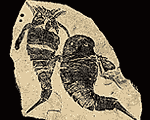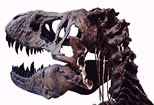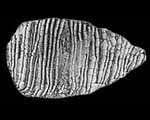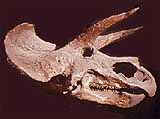










Fossils tell many stories about past and present biodiversity, about past relatives and extinctions.
These stories tell us about how life has changed over time.
Now it's time to review what what we've learned.
First we will show you four different fossils, each of which has a living relative today.
Your job is to choose which is the closest living relative.
Which is the closest living relative?


The closest living relative of the marine eurypterids are desert-living scorpions!
Which is the closest living relative?

The giant T. rex is most closely related to today's birds!
Which is the closest living relative?

The closest living relatives of helicoplacoids are echinoderms, such as sea urchins.
Now, let's look at extinctions.
We will show you three different fossils.
Your job is to match each fossil with the appropriate extinction fact.
Which extinction fact relates to this fossil?
a) Part of the largest mass extinction
b) All the corals went extinct
c) Asteroid impact involved
d) Humans played a role

The extinction at the Cretaceous-Tertiary boundary is believed to be associated with an asteroid impact.
Which extinction fact relates to this fossil?
a) Part of the largest mass extinction
b) All the corals went extinct
c) Asteroid impact involved
c) Humans played a role

Human hunters are thought to have contributed to the extinction of large mammals such as mammoths.
Which extinction fact relates to this fossil?
a) Part of the largest mass extinction
b) All the corals went extinct
c) Asteroid impact involved
c) Humans played a role

Trilobites are only one of the many groups of animals that perished at the End-Permian extinction.